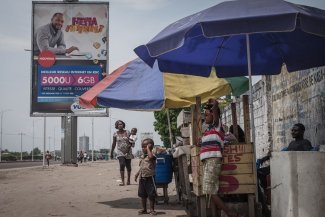On a Sunday evening in December 2012, a 23-year-old medical student was returning from the cinema with a male friend, when they were attacked on a bus by a group of men. She was raped several times and later died, while her friend was beaten with an iron rod.
The incident sparked mass protests demanding action. The three attackers were sentenced to death and the following March, the government passed a bill broadening the definition of sexual offences to include forced penetration by any object, stalking, acid violence and disrobing.
The legislation followed a report by the Justice Verma Committee citing “the failure of governance to provide a safe and dignified environment for the women of India, who are constantly exposed to sexual violence.”
Since the attack, reported rape cases have risen in India. According to the National Crime Records Bureau, there were 337,922 reports of violence, including rape, cruelty and abduction, against women in 2014, up 9 per cent from 2013.
The number of reported rapes in the country also rose by 9 per cent to 33,707 in 2014.
But many believe rape is still not taken seriously enough. Marital rape is still legal. India’s minister for women and child development Maneka Gandhi, recently contended that rape could not be criminalised because Indian society considers “marriage as a sacrament”.
Last year, a 28-year-old victim of domestic violence who had already filed charges against her husband, submitted a plea to the Supreme Court to delete the marital rape exemption. The petition was unsuccessful. A second petition representing several women’s rights organisations was also withdrawn.
Progress, still but far to go
Runjana Kumari, one of India’s leading women’s rights activists and director of the New Delhi NGO Center for Social Research, points out that while national figures are much lower than the real picture, more women are stepping up to report cases of violence.
“Data has doubled in Delhi. It hasn’t increased enough but it has from previous times,” Kumari tells Equal Times. “The law has become very stringent and defines rape very widely. The punishment framework is also very stringent.
“We have been dealing with such cases for 30 years but now people are more alert and there is a lot more media reaction,” she says. “People are willing to participate in protests. The situation has changed.”
But social stigma, especially when sexual violence occurs within the family, is still normal, Kumari explains. Many police officers still don’t take cases of violence seriously, often blaming victims.
During a video call with Equal Times, Kumari had to interrupt the interview several times to answer phone calls regarding the case of a girl who was raped on the street the previous night in southern India.
“The police officers are saying we are exaggerating [the situation] but they are trying to hide it. We have to file cases like this again and again,” she says.
The police point out that the victim did not report the incident, but Kumari says many women are too scared to do so. “They will be blamed, and they will be asked ’Why were you wearing this? What was your relationship with the man? What were you doing out on the road at that time?’”
For the situation to change, she believes more women have to be in positions of power.
“The more women coming into positions of power, in corporate positions or in politics, the more they will come into policy-making. Until then, this kind of abuse will continue because we are always on the asking side, asking for protection and police action.”
Not just India
Sexual violence against women is a global concern. In the United States, there are around 293,000 victims of sexual assault every year.
Sexual assault is also underreported according to the Rape Abuse and Incest National Network, with 68 percent of cases going unreported and custodial sentences only served by 2 per cent of rapists.
A report by the European Institute for Gender Equality revealed that sexual violence affects an estimated 35 per cent of women in the Czech Republic, 28 per cent in Denmark, 13 per cent of women in Germany and 17 per cent in Poland.
The institute also points out that reported rape cases in Europe range from 1 to 12 per cent and that an even smaller percentage of cases result in prosecution.
But India has been in the spotlight because more and more women are protesting about gender-based violence and the media now regularly reports on rape.
However, victim-blaming is still rampant. Indian photojournalist Smita Sharma says that although India’s media does report on cases of violence, often the reporting isn’t sensitive enough to change people’s mindsets; TV reports often go into scurrilous detail about things such as what victims were wearing when they were attacked.
“The Indian media is reporting it but not as much as they should. They never show the perspective of the survivor and the challenges that they suffer,” she says.
“No one is trying to find out why men behave in this manner. There is always an excuse to blame women and justify the actions of men.”
Sharma decided to photograph the victims of rape and follow their cases to find out what happens after the ordeal. After talking to around 30 victims, she found that over 90 per cent of cases were not reported.
The 35-year-old photographer, based between Calcutta and New York, now plans to make a film to be screened in villages across India. Her recent Kickstarter campaign secured over 400 backers who pledged US$30,000 to help bring her project to life.
“It will give a voice to these girls and women and force people to think,” Sharma says. “I want to show them as fighters, as heroes.”
She has also teamed up with police in the southern Indian city of Hyderabad to support the "She Team". Launched in October 2014, it consists of police officers who secretly patrol the city in civilian clothing while carrying hidden cameras to curb the sexual harassment of women in public places.
As part of the project Sharma wants to give bicycles to girls to stop them from dropping out of school due to sexual assault, since many young girls are raped as they walk home.
Red Brigades
In recent years there have been a growing number of campaigns to help the victims of violence in India, to fight social stigma and to call for the government to enforce stricter laws, as well as to promote equality between men and women.
The Right to Pee campaign is a collaborative effort by activists and charities calling for better access to free and clean public toilets for women.
There are also initiatives like the Red Brigades in the outskirts of northern city of Lucknow. This female-only collective teaches other women and girls self-defence and targets males who have committed sexual assault.
“First we talk directly to the man. After that, we talk to his parents. The third stage is to go to the police station,” 27-year-old Red Brigade founder Usha Vishwakarma tells Equal Times. “If the man still doesn’t admit his actions were wrong, we go into the action stage.”
The ‘action stage’ consists of groups of four or five Red Brigaders publicly beating and humiliating the tormentors.
Many of the young women on the team are survivors of rape and gender-based violence themselves, including Vishwakarma. She was almost raped by a fellow teacher and only escaped because the jeans she was wearing were too difficult to open. This terrifying experience perhaps motivated her to try to combat sexual violence on a larger scale.
According to Vishwakarma, the Red Brigades, which began with 15 in 2011, now comprises 55 ‘action girls’ and over 8,000 members across India. An important part of the support they offer involves helping victims realise that the violence they faced was not their fault.
Purnima Nagaraja, a renowned Hyderabad-based psychiatristwho has worked with thousands of rape victims since 1992, says most women she sees ignore the fact they were violated, and sometimes don’t even acknowledge the violence they have experienced.
“They come for something else, like eating disorders or depression, and then we go back, and they have been raped and abused,” Nagaraja says.
While she points out that India now has stronger laws, Nagaraja says India needs to focus more on “gender-sensitisation”.
She tells Equal Times: “What we do here [at Dhrithi Psychiatric Care, the clinic founded by Dr Nagaraja] is to empower women, give them knowledge and to understand that it is something they don’t need to put up with.”
Shazneen Limjerwala, a psychotherapist and the author of The Aftermath of Rape in Gujarat: The Dialectics of Voice and Silence says India needs to make medical, legal and social systems more accessible, as well as potential supporters more approachable.
“The legal system itself re-perpetrates the violence through tardiness of follow-up, and the laxity with which the issue is treated,” she says. “People need to be aware of the laws. Currently approaching the legal representative is a process filled with fear and stigma.”
You can see a selection of photos from Smita Sharma’s photo essay Chronicles of Courage here on Equal Times.









